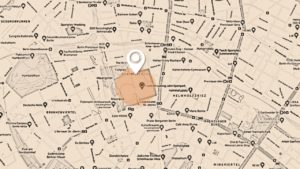Bereits im Dezember 2019 berichteten wir erstmals über die Umbaupläne für den Friedrich-Ludwig-Jahnsportpark im Pankower Stadtteil Prenzlauer Berg. Zum damaligen Zeitpunkt war der Plan eindeutig: Der Abriss des maroden Stadions sollte im Herbst 2020 beginnen, ein ähnlich dimensionierter Neubau sollte folgen.
Gegen diese Pläne hatte es massive Widerstände von Anwohner*innen und Bürgerinitiativen gegeben und auch in den zuständigen Gremien des Bezirks war man sich plötzlich nicht mehr einig darüber, ob der Abriss des Stadions wirklich alternativlos ist. Die Anwohner*innen kritisierten vor allem ein fehlendes, sinnvolles Verkehrskonzept für ein mögliches neues Stadion.
Proteste von Anwohner*innen und Bürgerinitiativen waren erfolgreich
Auch eine Online-Petition gegen die Umsetzung dieser Pläne hatte es gegeben – offenbar mit Erfolg. Das Planungsverfahren wird nun noch einmal neu justiert, mit völlig offenem Ausgang. Klar ist nur: Die Entscheidung über die Zukunft des Jahnsportparks soll noch vor der Wahl im September 2021 fallen.
Das sagte jedenfalls Katrin Dietl, die Sprecherin der Senatsverwaltung für Stadtentwicklung und Wohnen. Das Projekt liegt also nicht mehr ausschließlich beim Bezirk. Auch der Senat hat sich in den Planungsprozess eingeschaltet.
Entscheidung über Zukunft des Areals soll vor der Wahl im September 2021 fallen
Denn das Hickhack in der Bezirksverordnetenversammlung hatte zu großen Verzögerungen des Planungsablaufs geführt und unter anderem dafür gesorgt, dass die Austragung der Special Olympics im Jahre 2023, die im neu gebauten Stadion durchgeführt werden sollten, an einen alternativen Standort verlegt werden müssen. Im Gespräch ist das Mommsenstadion in Charlottenburg.
Um das Verfahren nun zu beschleunigen, beginnen Ende Juni die Planungsteams mit ihrer Arbeit. Dabei werden drei verschiedene, autark arbeitende Teams an drei unterschiedlichen Szenarien arbeiten.
Drei mögliche Szenarien werden untersucht
Das erste Szenario ist das bisher geplante: Abriss des alten Stadions und Neubau an gleicher Stelle. Das zweite Szenario ist ein Umbau und eine Teilsanierung des bestehenden Stadions. Szenario drei mutet auf den ersten Blick besonders ungewöhnlich an. Dieses sieht den Neubau eines Stadions und die Sanierung und den Weiterbetrieb des bisherigen Stadions vor. Das neue Stadion wäre dann deutlich kleiner als das bisherige Stadion, welches 20.000 Zuschauer fasst.
Offiziell berücksichtigt werden müssen bei allen Szenarien zentrale städtebaulich fokussierte Planungsvorgaben, die in der Machbarkeitsstudie der Sportverwaltung festgelegt wurden. Dazu gehört etwa die denkmalgeschützte Hinterlandmauer, aber auch Freiraum- und Landschaftsstrukturen, bestehende Wegeverbindungen und weitere, sogenannte “identitätsstiftende Merkmale”. Diese sollen in jedem Fall erhalten bleiben.
Abriss der alten Flutlichtmasten ist möglich
Ein solches identitätsstiftendes Merkmal stellen die ikonischen Flutlichtmasten des alten Stadions dar. Ob diese bestehen bleiben, hängt aber ganz klar davon ab, welches Szenario sich im aktuellen Planungsverfahren durchsetzen wird. Heißt im Klartext: Sollte es einen Abriss des alten Stadions und einen Neubau an gleicher Stelle geben, würden die Flutlichtmasten abgerissen werden.
Es ist aber durchaus möglich, dass zukünftig zwei Stadien nebeneinander im Sportpark an der Schönhauser Allee stehen. Auch die übrige Gestaltung des Sportparks wird im Rahmen des Planungsverfahrens noch einmal analysiert.
Stehen zukünftig zwei Stadien nebeneinander im Sportpark?
Denn der Neubau des Stadions ist nur ein Teil einer geplanten, umfassenden Neukonzeption des gesamten Areals, welches schon heute mehrere Fußball- Tennis- und Basketballplätze sowie Lauf- und Freizeitflächen bietet. Das Angebot soll modernisiert und erweitert werden.
Auch die Errichtung eines Alba-Vereinszentrums ist Teil der Erweiterungspläne, die – ohne Stadion-Neubau – rund 95 Millionen Euro kosten soll. Der Stadion-Neubau war 2014 mit rund 120 Millionen Euro beziffert worden. Diese Summe muss nun natürlich noch einmal neu kalkuliert werden.
Wie die letztendliche Lösung für den zukünftigen Jahnsportpark aussehen wird, ist jetzt noch nicht absehbar. Ein schnelles Planungsverfahren und zügige Gewissheit für die Nachbarschaft wäre jedoch wünschenswert. Wir werden das Thema weiter verfolgen.
Mehr Projekte in Pankow gibt es hier.
Eine Fotostrecke des erweiterten Mauerparks in direkter Nachbarschaft zum Jahnsportpark gibt es hier.
Back in December 2019, we reported for the first time on the rebuilding plans for the Friedrich-Ludwig-Jahnsportpark in the Prenzlauer Berg district of Pankow. At the time, the plan was clear: Demolition of the dilapidated stadium was to begin in the fall of 2020, followed by a similarly sized new building.
There was massive opposition to these plans from residents and citizens’ initiatives, and even the responsible committees of the district were suddenly no longer in agreement about whether the demolition of the stadium was really without alternative. The residents criticized above all the lack of a sensible traffic concept for a possible new stadium.
PROTESTS BY RESIDENTS AND CITIZENS’ INITIATIVES WERE SUCCESSFUL
There had also been an online petition against the implementation of these plans – apparently with success. The planning process is now being readjusted once again, with a completely open outcome. The only thing that is clear is that the decision on the future of the Jahnsportpark is to be made before the elections in September 2021.
At least that’s what Katrin Dietl, spokeswoman for the Senate Department for Urban Development and Housing, said. So the project no longer lies exclusively with the district. The Senate has also become involved in the planning process.
DECISION ON THE FUTURE OF THE SITE TO BE MADE BEFORE THE ELECTIONS IN SEPTEMBER
This is because the wrangling in the district council had led to major delays in the planning process and, among other things, ensured that the staging of the Special Olympics in 2023, which were to be held in the newly built stadium, would have to be moved to an alternative site. Under discussion is the Mommsen Stadium in Charlottenburg.
To speed up the process, the planning teams will begin their work at the end of June. Three different, autonomous teams will work on three different scenarios.
THREE POSSIBLE SCENARIOS ARE BEING EXAMINED
The first scenario is the one planned so far: demolition of the old stadium and new construction on the same site. The second scenario is a reconstruction and partial renovation of the existing stadium. Scenario three seems particularly unusual at first glance. It envisages the construction of a new stadium and the renovation and continued operation of the existing stadium. The new stadium would then be significantly smaller than the current stadium, which holds 20,000 spectators.
Official consideration must be given in all scenarios to central planning requirements focused on urban development, which were defined in the feasibility study by the sports administration. These include, for example, the listed Hinterland wall, as well as open space and landscape structures, existing pathways and other so-called “identity-creating features”. These are to be preserved in any case.
DEMOLITION OF THE OLD FLOODLIGHT MASTS IS POSSIBLE
The iconic floodlight masts of the old stadium represent one such identity-creating feature. However, whether they will be retained clearly depends on which scenario prevails in the current planning process. In plain language, this means that if the old stadium is demolished and a new building is erected on the same site, the floodlight masts would be demolished.
However, it is entirely possible that two stadiums will stand side by side in the future in the sports park on Schönhauser Allee. The remaining design of the sports park will also be analyzed again as part of the planning process.
WILL THERE BE TWO STADIUMS NEXT TO EACH OTHER AT THE SPORTS PARK IN THE FUTURE?
After all, the new stadium is only one part of a planned, comprehensive redesign of the entire area, which already offers several soccer, tennis and basketball fields as well as running and recreational areas. The facilities are to be modernized and expanded.
The construction of an Alba club center is also part of the expansion plans, which – without the new stadium construction – is expected to cost around 95 million euros. In 2014, the new stadium was estimated to cost around 120 million euros. Of course, this sum will now have to be recalculated.
What the final solution for the future Jahnsportpark will look like is not yet foreseeable. However, a rapid planning process and speedy certainty for the neighborhood would be desirable. We will continue to monitor the issue.

 Abriss, Neubau, Weiterbetrieb, Parallelbetrieb? Um die Zukunft des Stadions im Jahnsportpark wird intensiv gerungen.
Abriss, Neubau, Weiterbetrieb, Parallelbetrieb? Um die Zukunft des Stadions im Jahnsportpark wird intensiv gerungen. Identitätsstiftendes Merkmal für den Kiez an der Schönhauser Allee: Die alten Flutlichtmasten des bestehenden Stadions.
Identitätsstiftendes Merkmal für den Kiez an der Schönhauser Allee: Die alten Flutlichtmasten des bestehenden Stadions.
3 Pingbacks